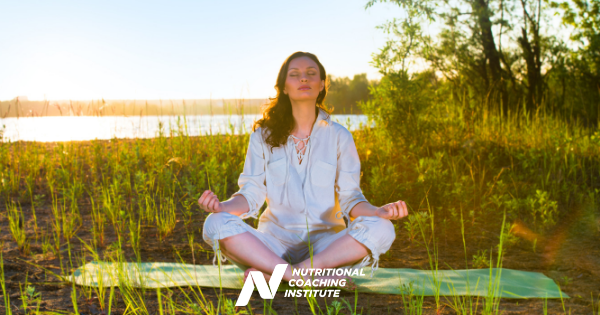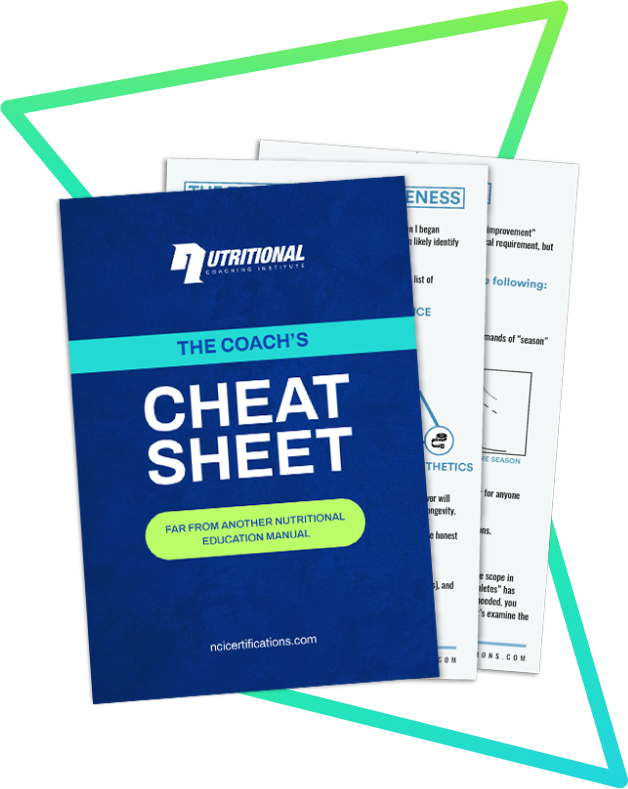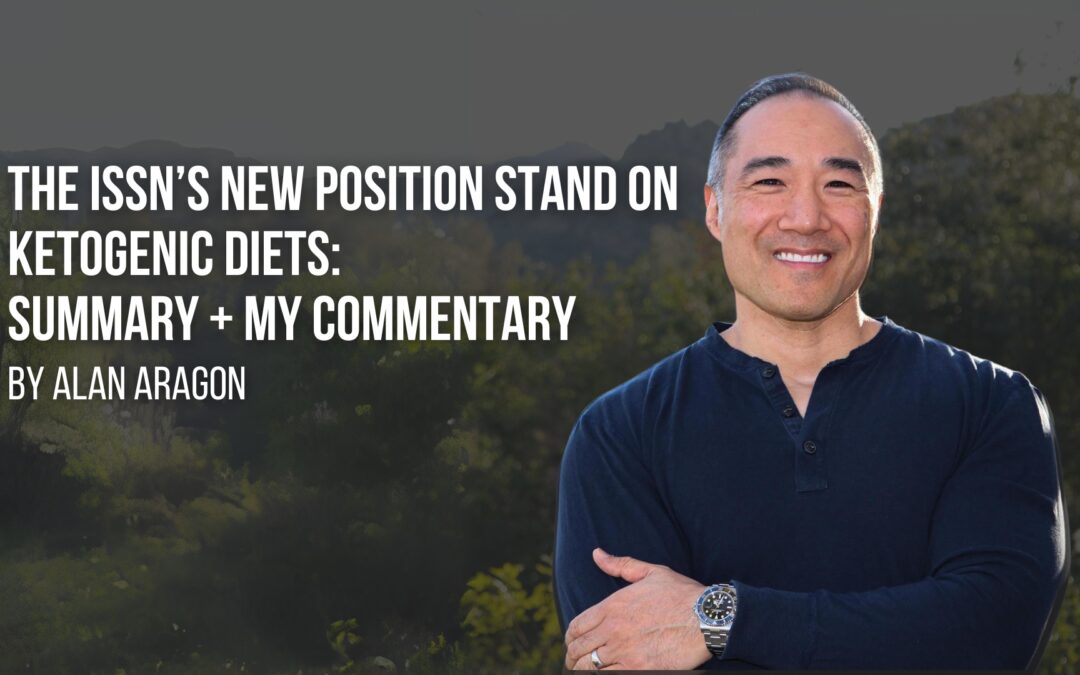Mindfulness, a practice that emphasizes a state of awareness and the ability to be present in the moment, has become increasingly popular over recent years. While the concept of mindfulness was once acknowledged primarily amongst psychotherapists, it is now discussed outside of the clinical world.
Currently, the term mindfulness is often utilized in the world of pop culture and self-help, but it has also become helpful in encouraging mindset-related changes during the nutritional coaching process. One key feature of mindfulness is not only to be able to have in-the-moment awareness, but also to have minimal attachment or judgment to the moment as it arises. Individuals who are willing to prioritize mindfulness as part of their daily routine may notice a number of cognitive, emotional and physiological benefits.
“Mindfulness has been theoretically and empirically associated with psychological well-being” (Keng et al, 1041) and has been linked to decreasing depression, anxiety, obsessive thinking, fear, and anger. Individuals who regularly practice mindfulness may also notice improvements in memory and attention, shifts in overall attitude (including increased feelings of positivity, curiosity, and openness) and find themselves less judgmental and more accepting of others, life circumstances and themselves.
While mindfulness is a practice that takes time and continual work to improve upon, it is something that can be emphasized daily. There are several tactics that anyone can incorporate into their daily routine in an effort to feel more present in the moment, and less attached to negative thoughts and feelings. The following 5 tools may be beneficial to individuals interested in increasing mindfulness:
1. Utilizing the 5 senses
Our brain has a way of consciously connecting us with the world around us. Often, we get lost in our own thoughts and thereby decrease our feelings of being grounded in the moment. Reconnecting with our environment by accessing our 5 senses can help us remain present and mindful.
As you probably remember from elementary school, the 5 senses are taste, touch, smell, sight, and sound. Individuals practicing mindfulness can be encouraged to observe their surroundings, mentally or verbally noting what they see, smell, taste, hear and touch. This can be done anywhere and with little attention drawn upon the person attempting it.
2. Diaphragmatic Breathing
Diaphragmatic breathing or “belly breathing” helps to increase physical and psychological feelings of relaxation. One study showed a decrease in cortisol amongst individuals who engaged in diaphragmatic breathing, especially after training.
In order to practice diaphragmatic breathing, individuals can sit in a comfortable and relaxed position, placing one hand on their chest and one on their belly. Individuals should be encouraged to breathe in slowly through their nose, feeling their belly rise. One can hold their breath for a short period of time, and then breathe out more slowly then they breathed in, feeling their belly fall back to a relaxed position.
3. Progressive Muscle Relaxation
Progressing muscle relaxation, also known as PMR, is a relaxation method that focuses on decreasing muscle tension. The process of tensing, holding and then releasing muscle groups throughout your body can work to decrease blood pressure, heart rate, and overall stress.
Paying attention to different muscle groups during the activity can also help reduce obsessive or negative thoughts by providing a positive distraction and source of focus. *
4. Guided Imagery
Guided imagery is a technique that utilizes imagination and visualization. Participants are to be made comfortable and then led by a practitioner through a series of prompts, allowing them to envision or navigate situations that may benefit them.
For example, if a client is seeking increased relaxation, perhaps they will be guided through a scene of their “happy place” encouraged to engage the 5 senses. If a client is struggling with motivation or follow-through, they may be encouraged to visualize the situation that is causing stress in their life so that they can better navigate how to move through it. The process should be relaxing and positive.*
5. Meditation
Meditation, or the practice of achieving a deep state of mental relaxation and peace, is a skill that requires constant practice and attention. There are different forms of meditation and beliefs on how it can best be conducted.
Overall the main goal is often to reduce the incessant and undisciplined work of the mind, and instead achieve a great state of stillness and reflection. Apps such as Headspace can be one way to slowly start increasing small periods of meditation into daily life.
*Please note, all of these methods (especially those noted) should be utilized in a psychotherapy setting for optimal results, especially if a history of trauma or other mental health concern (past or current) is present and can be triggered. For individuals wishing to simply promote mindfulness and increase relaxation, resources are available and videos can be accessed online.
It is important to remember that the activities outlined above do not have to be done for long periods of time in order to be effective. Even a few minutes a day of prioritizing breath work, focus, and engaging the parasympathetic nervous system can help a client decrease feelings of anxiety, stress, depression, or obsessive thoughts.
Practicing mindfulness can also help improve sleep and concentration. Therefore, gradually incorporating mindfulness-based activities into one’s routine should be encouraged, without it needing to become additional stress or added chore.
Nutrition Coaches
As nutrition coaches, it’s important to understand that we are not mental health practitioners or psychotherapists. However, coaches can still encourage clients without complicated mental health histories to increase mindfulness, and work to let go of obsessive or negative thoughts around food.
Mindfulness in regards to a nutritional protocol can be beneficial for the following reasons:
- Mindful eating can help reduce incidences of overeating and emotional eating by providing the opportunity for clients to become more aware of natural hunger cues, or emotional needs that are prompting them to eat.
- Clients can increase mindfulness during the eating process by activating their 5 senses, reducing distractions like television during meal times, and counting how many times they chew (especially if they eat too quickly, struggle to follow natural hunger cues, or have digestive issues).
- Many clients are overstressed and underfed, contributing to increased cortisol. Increasing mindfulness throughout daily life can help to shift our nervous system from the sympathetic to parasympathetic.
- Clients prioritizing mindfulness during their day-to-day routine may be better able to assess their progress, including biofeedback changes, hydration, activity level, and physiological responses to certain meals.
- Since mindfulness has been found to lower anxiety, depression, and overall stress, clients may notice improvements with sleep, digestion, and stress management/self-care.
Increasing mindfulness in one’s daily life has been shown to be beneficial in a variety of ways. As long as coaches understand their scope of practice and work to know the individual needs of the clients they are working with, encouraging mindfulness may not only be appropriate but could warrant further growth and success.
References
Davis, D and Hayes, J. “What Are the Benefits of Mindfulness? A Practice Review of Psychotherapy-Related Research.” Psychotherapy 48.2 (2011): 198. APA. Web. 29 Sept. 2018.
“Diaphragmatic Breathing.” Cleveland Clinic, Cleveland Clinic News, https://my.clevelandclinic.org/health/articles/9445-diaphragmatic-breathing.
Keng, S, Robins, C, Smoski, M. “Effects of Mindfulness on Psychological Health: A Review of Empirical Studies.” Clinical Psychology Review 31.6 (2011): 1041-1056. NCBI. Web. 30 Sept. 2018.
Ma, Xiao et al. “The Effect of Diaphragmatic Breathing on Attention, Negative Affect and Stress in Healthy Adults.” Frontiers in Psychology 8 (2017): 874. PMC. Web. 10 Oct. 2018.
Rama, Swami. “The Real Meaning of Meditation.” Yoga International, Yoga International, https://yogainternational.com/article/view/the-real-meaning-of-meditation.





